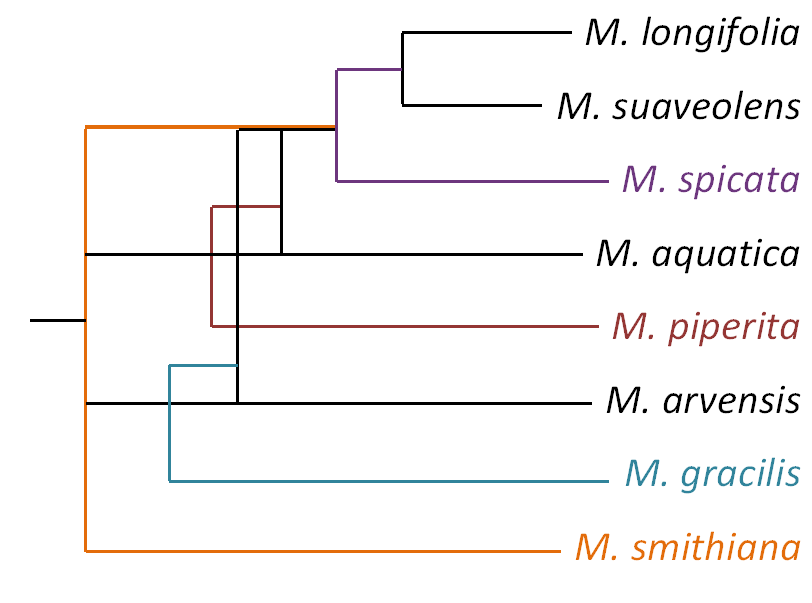Phylogenetic Trees
MOLECULAR PHYLOGENETIC TREE
As stated in Reproduction Mentha x piperita is a hybrid, formed by the crossing of Mentha aquatica and Mentha spicata. Hybridization can lead to plant evolution which in turn leads to gene flow and complex genome reorganization. A genome is complete genetic information (DNA) of an organism, typically expressed in number of base pairs.
Genome evolution of hybrids is often based on multiple interactions including gene conversion, recombination, and intergenomic chromosomal exchanges. These interactions lead to the new functions and adaptations found in hybrids.
The genus Mentha contains 25 species which are monophyletic. The species are considered monophyletic because they all come from a single taxa (Mentha).
Modern taxonomic studies show, when looking closer at the
species that make up the genus Mentha there are four
main species. These main species,
M. longifolia, M.
suaveolens, M. arvensis, and M. aquatica,
are not hybrids and contain a basic chromosome number of n=12.
Based off the molecular structure (main cytotypes) of the species and what species make what hybridized species the following molecular phylogenetic tree can be created.

A cytoptype can be defined as an individual of a species that
has a different chromosomal factor. A basic example of this
would be a haploid cell versus a diploid cell. The cytotpes for
each species is listed below:
M. longifolia
2n = 24
M. suaveolens 2n = 24
M. spicata
2n = 36, 48
M. aquatica 2n = 96
M. arvensis
2n = 72, 96
M. piperita
2n = 66, 72
M. gracilis
2n = 60, 84
M. smithiana 2n = 108
For more information on how M. piperita is related to other organisms check out the Interesting Facts & Recipes page.